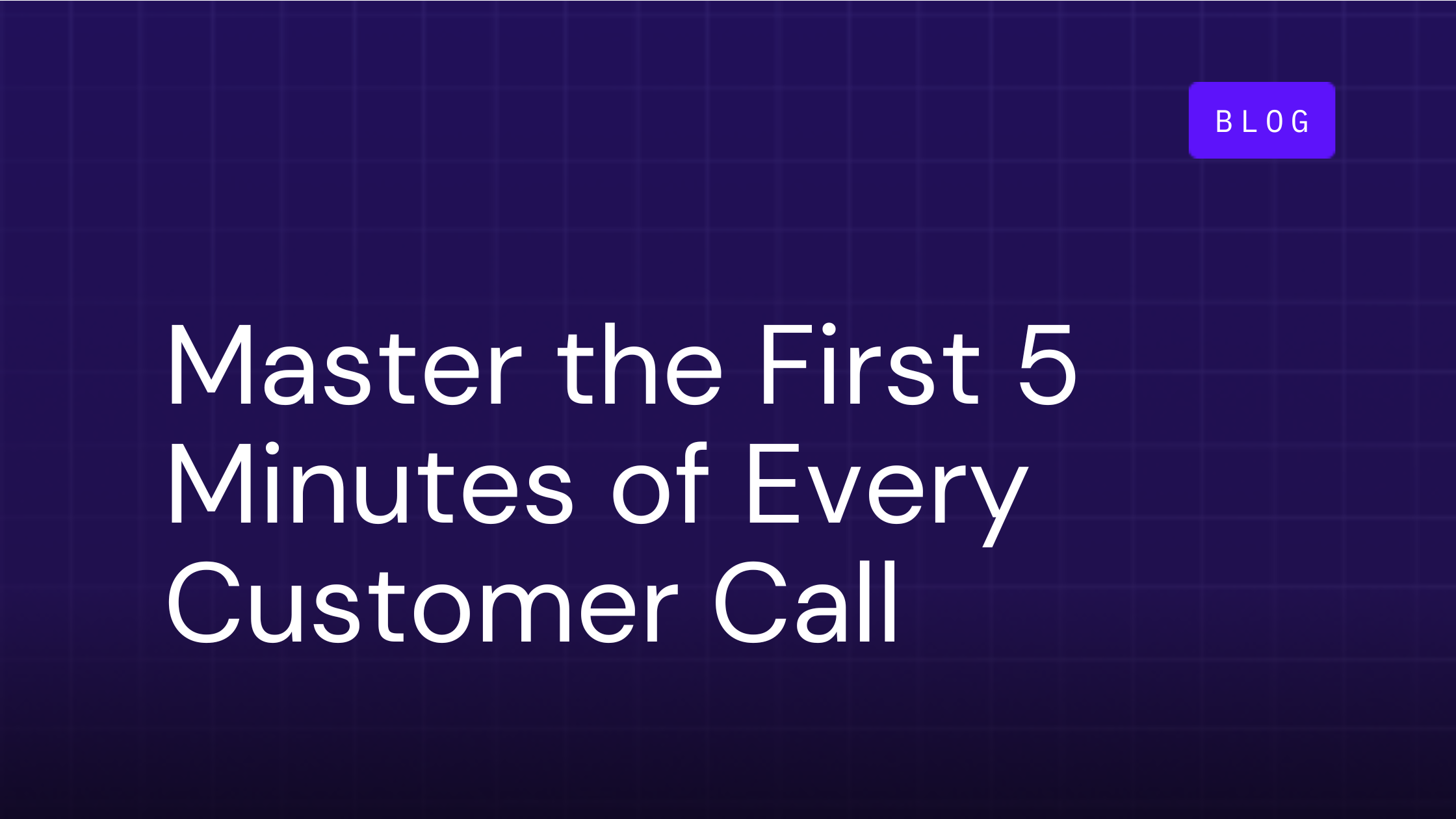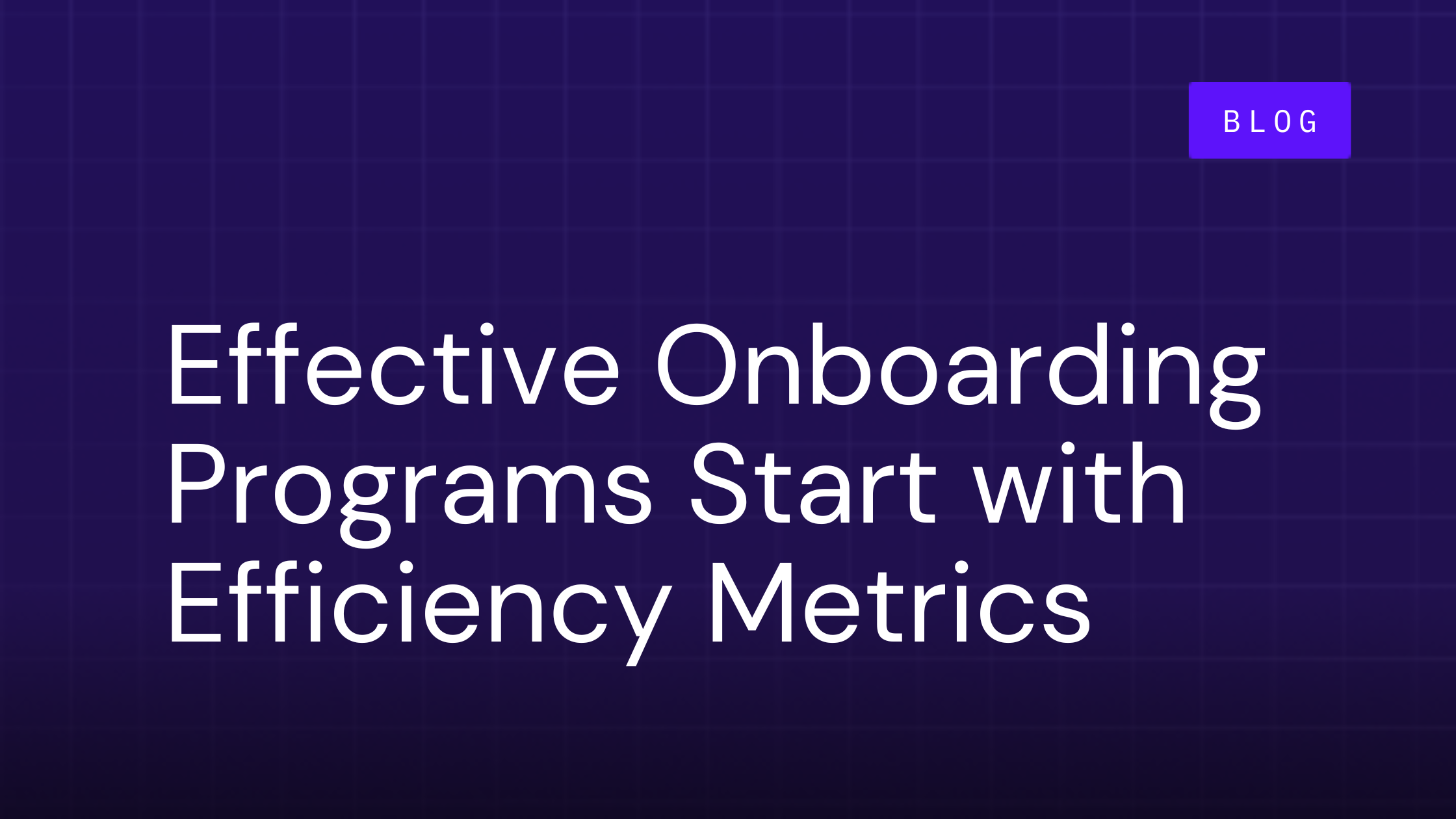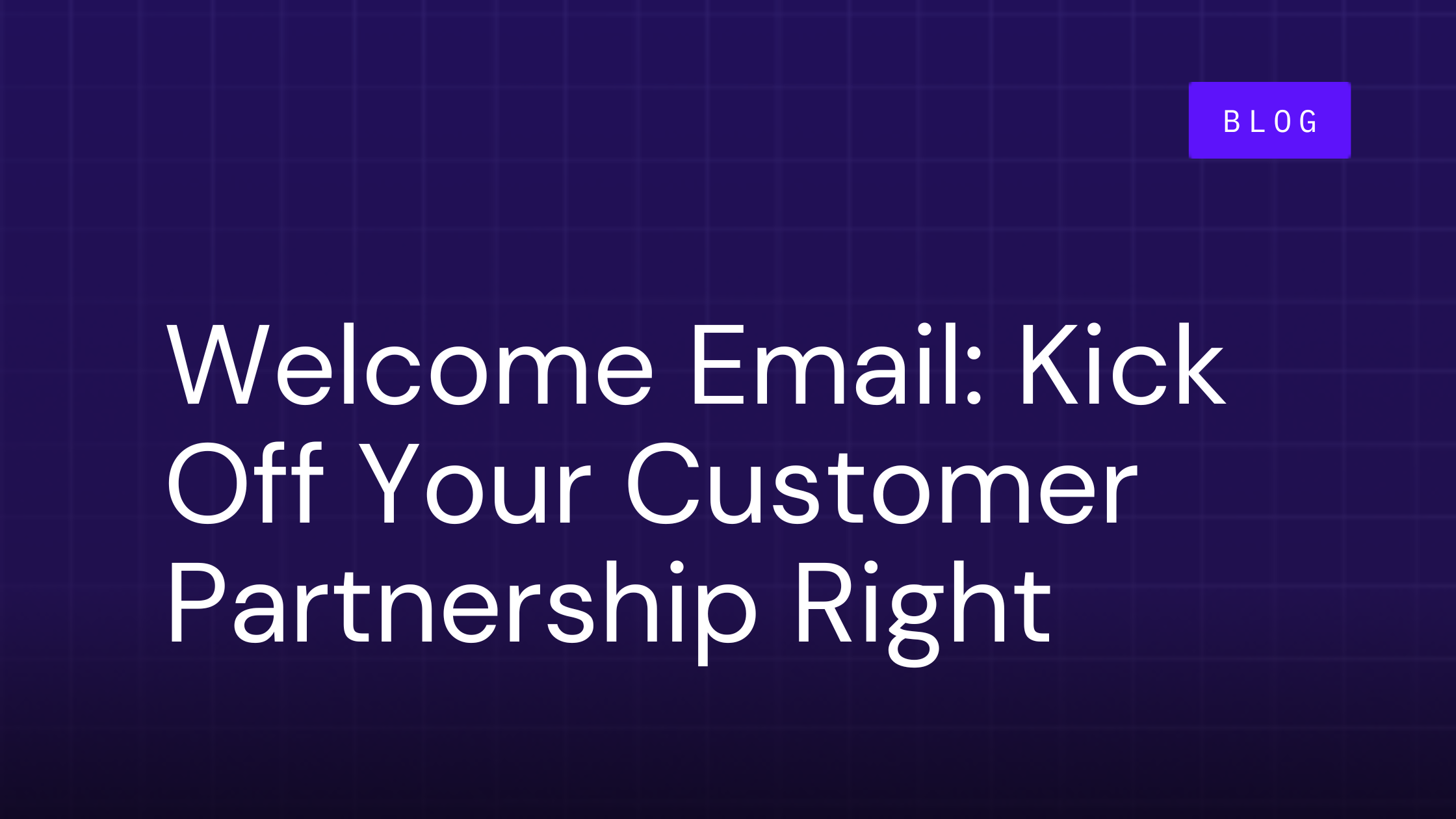How to Use the First 5 Minutes of Every Customer Call Effectively

Table of Contents
The first five minutes of that kickoff call are the most important five minutes of this new team-customer relationship. You gotta bring your A-game: being on time, solid communication and listening skills, and knowing your product or service better than the back of your hand.
Guarantee that meeting kicks off a little easier — and your new customer sings your praises — by building a few good habits in the prep stage.
Meeting Prep
A major factor to early success in this new partnership lies in preparing for customer meetings and sharing a meeting agenda (not a deck) the day before the call. Prove you're worth your salt by paying extra attention and putting in the necessary work to self-educate on the shared benefits of your work together. It also acts as a reminder about the meeting and any prep work you've requested from your customer.
Fancy agendas are cool, but useful ones are better. Save yourself — and everyone else — from a time-killing vortex of agenda points by laying out no more than three immediate next steps.
Reviewing any sales handoff notes and active support tickets is the final essential preparatory step. If someone on your team left them on "read" with unanswered questions or unresolved support tickets, bring the answers with you to the meeting. Eliminate a potentially awkward exchange, and make yourself a rockstar in the process!
Prep Logistics
Make sure everyone accepted the invite. It's amazing how often one person doesn't click "yes" on the meeting invite and then you have to schedule a separate conversation with them, ultimately wasting time and effort. Who really wants to do that? Reach out to any unresponsive invites a day or two before with a reminder about the initial meeting request along with the date and time.
If you're sharing a deck, have no more than two areas where it needs to be customized, including logos, content, etc. Otherwise, you risk having too much prep work and you could miss some of the more important details (time-killing vortex, remember?).
Two screens are better than one — always. Put your notes app on the same screen as your camera and Zoom menu so you're looking at the camera when taking notes. On the second screen, change your media view to "full screen." No one wants to see distracting messy desktops or display tabs.
"Do Not Disturb" is a pro tool. To keep from getting distracted by pop-ups, other meeting or agenda reminders, Slack messages, emails, and everything else that inundates our work lives, activate your Do Not Disturb. If you want to automatically turn on DND when you start screen-sharing, check out Muzzle.
Connect those AirPods early. Just like you prep for the client, prep yourself and your tech, too. The last thing you want to run into during any customer-facing call is holding it up or having to disconnect and reconnect or leave because you couldn't hear or they couldn't hear you. It will drive everyone nuts, not to mention drive your own anxiety through the roof.
Customize your Zoom meeting room to include your logo. It's tough to appear unimpressive to a client when you look as professional as possible. Zoom has an in-house resource guide to help out with the meeting room feature that can prove to be invaluable in how you portray your company and yourself.
Does It Matter How You Start Off Your First Call?
What does a politician do on their first day of work? They work on being reelected! Just like those politicians, you're always working on selling the customer the next product or service they may need.
Oftentimes you might be meeting a new person, like the person the deal was handed off to rather than the buyer who inked the deal. The new person's OKR could be to make sure your company tools are successful. First interactions with new shareholders are important regardless of any history.
Every single touchpoint should add value, but the first should set the tone. Our workdays are already packed to the gills with emails, calls, meetings, and general task lists a mile long. Prove that you see it as a privilege when a customer makes time to meet with you, and be ready to roll from minute one.
How Should You Prioritize the First 5 Minutes?
1-2 minutes: Go ahead and show some personality. Mix a little small talk into your intro.
You're only on the clock eight hours a day, but you're human all the time no matter what. It's OK to have some personality and not be another cog in the machine during meetings. While getting to business should be the main objective, nothing feels and sells better than human connection.
1 minute: Moving further into the conversation, you should explain who you are (including some background about yourself) and the reason for the call. Tell them how long you've been with the company or about any relevant experience you have to build their confidence and trust in you. Share why you're excited to work with them with real, research-backed examples. Doing your homework on their product/solution is a non-negotiable, and they will know if you didn't.
1-2 minutes: Open the floor for quick introductions and a fun icebreaker. Think of a question that's catered to them but not super personal, like "What's your favorite strange food?" or "What's your favorite thing about where you're from?" A quick (and appropriate) well-timed joke or lighthearted question could ease tension or awkward silences. Charm, humor, and charisma can get you farther than that slide deck alone.
1 minute: Be in command. Start by simply explaining what you expect to get done in the time you have together while the visual grabs their attention and gives definitive talking points. Don't promise to climb Mount Everest when only a walk up the hill is needed, but ensure their trust in letting them know that they came to the right place and that you're the right person for the job.
Once you've presented, quickly ask, "Does this sound good to you?" They'll not only have a chance to give any feedback on or add to the predetermined talking points, but they'll also know that it's time to get to work.
What Should You Avoid at the Beginning of the Call?
Avoid waiting 5-10 minutes for someone to show up. There comes a point when waiting for every single person means everybody else is losing time. Here's another pro tip: Record the call to share afterward. Not only can you send the recording to the fashionably late, but you can also have it as a reference for future projects. Likewise, make sure you're not the person everybody's waiting for! A few minutes of tardiness leaves as much of an impression as being a few minutes early.
Avoid doing too much. You don't need to go into every point and footnote of the agenda — just the important information. Similarly, avoid ramblers. Set a clear directive for introductions. One person pouring out their entire life story will take the phone call from "short" to "still listening over dinner."
Interoffice communication is continually shifting from in-person to full-out digital, and as long as you know what to prioritize in the first five minutes and what to avoid in preparing for customer meetings, you'll set a standard that will keep customers coming back to your business.
Paul Holder is cofounder and CEO of OnRamp, a B2B customer onboarding solution improving customer engagement and operational efficiency. Prior to OnRamp, I led Customers Success at Troops (acq. Salesforce), a SaaS startup changing the way humans interact with their CRMs, and customer onboarding at VTS, which is transforming the commercial real estate industry.
Related Posts:

Effective Customer Onboarding Programs Start with Efficiency Metrics
Did you picture a value-filled process sans any friction points? It might seem like a dream, but it doesn’t have to be. However, it...

How to Write a Great Customer Satisfaction Survey
Customer satisfaction surveys are a game-changer if your business wants to improve its services and build loyal customer...

Write a Welcome Email That Kicks Off Your Customer Partnership Right
After all, it’s the first onboarding communication you have with them. Like all first impressions, what you say and how you say it...